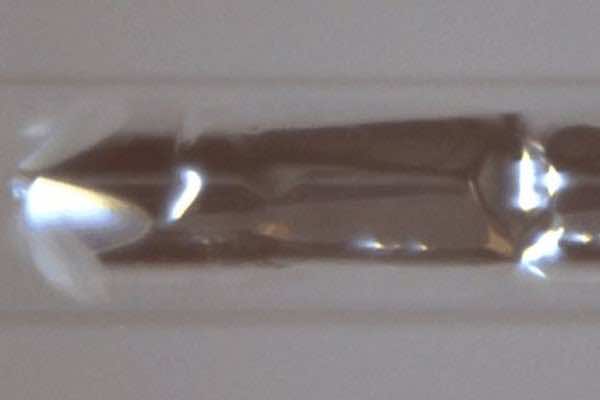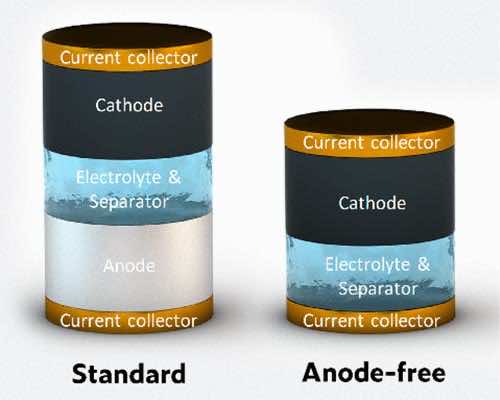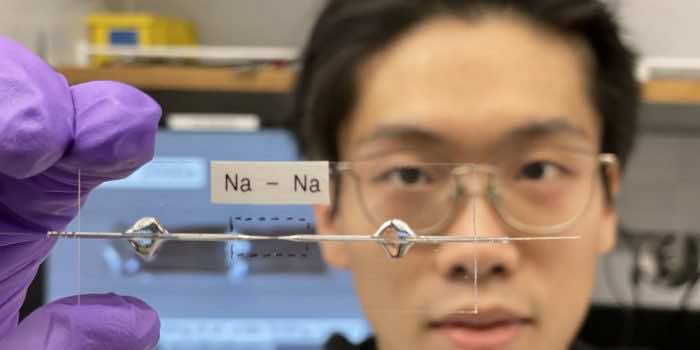Lab counters the anode puzzle and develops efficient and stable anode free sodium battery.
Researchers developed a stable sodium-ion battery that is proved to be more effective than other known forms of batteries. It would exclude the need for lithium-ion, hence would be smaller in size and would be developed at a cheaper cost. “We’ve found that the minimum is maximum,” said Peng Bai, assistant professor in the Department of Energy at Washington University in St. Louis. “No anode is the best anode.” The research was published in the new journal Advanced Science.
A conventional battery contains a cathode and anode that store lithium-ions, a separator that works to keep the electrodes on their designated sides, and an electrolyte, the liquid through which ions move. However, with the newfound method, the need for lithium-ions would be eliminated. Also, the idea of swapping lithium with sodium and doing away with the anode has been proposed earlier.
“We used old chemistry,” Bai said. “But the problem has been, with this well-known chemistry, no one ever showed this anode-free battery can have a reasonable lifetime. They always fail very quickly or have a very low capacity or require special processing of the current collector.”
The new sodium battery only uses a thin layer of copper foil as the current collector replacing the use of anode. The ions are transformed into a metal in the newly designed battery. Starting off, they plate themselves onto a copper foil and then dissolve away when it’s time to return to the cathode.

“In our discovery, there are no dendrites, no finger-like structures,” said Bingyuan Ma, the paper’s first author and a doctoral student in Bai’s lab. The deposit is immaculate, with a metallic luster. “This kind of growth mode has never been observed for this kind of alkali metal.”
An issue with conventional batteries could be diagnosed, however, upon opening up a battery, there is not much usefulness left, a person could only know what happened. The newly designed battery, however, uses a unique, transparent capillary cell that allows looking at batteries in a new way.
“All of the battery’s instabilities accumulate during the working process,” Bai said.” What really matters is instability during the dynamic process, and there’s no method to characterize that.” Watching Ma’s anode-free capillary cell, “We could clearly see that if you don’t have good quality control of your electrolyte, you’ll see various instabilities,” including the formation of dendrites, Bai said.
Researchers connected that alkali metals react with water, so they brought the water content down. “We were hoping just to see a good performance,” Bai said.
“We went back to check the capillary cells and realized there was a longer drying process of the electrolyte,” Bai said. Bai and Ma found that, in fact, it was the key. Bai said that water content must be lower than 10 parts per million. Knowing this, Ma built a capillary cell that allowed him to create a battery that performs just the way a lithium-ion battery does, packing another benefit that it is compact, because of ditching the anode.

“Check your cell phone. Your electric car. One-quarter of the cost of such items comes from the battery. Sodium batteries use a more common metal than lithium batteries; they have the same energy density as lithium batteries; and they are smaller and cheaper than lithium batteries, thanks to the elimination of the anode,” said Bai.


